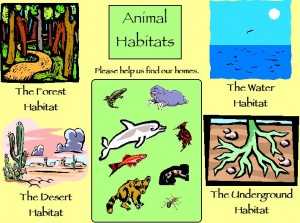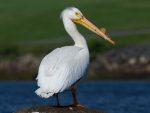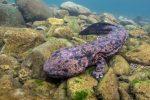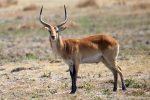What is Habitat?
A habitat is the specific type of environment which is ideal for the existence and growth of certain plants and animals. Habitats or biomes are determined by the climate and geography of the region as well as the animals and plants inhabiting the area. Most animal and bird species are adapted to survive in specific habitats and cannot live in other types of habitats.
For example, walruses are adapted to live in marine habitats and cannot survive in desserts or other terrestrial habitats. Similarly, rattlesnakes cannot live in marine waters or arctic regions as they are adapted for warm terrestrial habitats like grasslands and desserts. Animals living in extreme cold habitats may migrate to warmer regions during the winter, coming back to their original habitats again during the warm seasons.

Animal Habitats
This article discusses about the different types of habitats and the animals living in them.
Terrestrial Habitats
Terrestrial habitats refer to all types of land habitats found throughout the world. There are numerous types of terrestrial habitats, including the ones mentioned below:
Grasslands (savannas and prairies)
Grasslands are another type of habitat with a wide variety of animal and bird species. There are 2 kinds of grassland habitats, tropical and temperate. African savanna is an example of tropical grassland with animals like lions, giraffes, elephants, zebras and rhinos living in this area. Temperate grasslands are home to animals like deer, gazelle, mice, rabbits and various snakes.
Tropical rainforest
The rainforest habitats are divided into several layers or strata from the surface of the soil to the forest canopy.
Forest Floor: The bottom layer of this habitat is home to animals like okapi, tapir, Sumatran rhinoceros, western lowland gorilla as well as various amphibians, reptiles and insects.
Understory layer: Various mammals, birds, reptiles and insects inhabit this second stratum of rainforest habitat. Animals like leopards, boa constrictors and poison dart frogs are found in this layer.
Canopy layer: The canopy layer is inhabited by numerous arthropod species as well as other species like African gray parrot, keel-billed toucan, spider monkey and three-toed sloth.
Emergent layer: This stratum consists of very tall trees and is home to various animals and bird species including crowned eagle, large flying fox and king colobus.
Deserts
Deserts are wide arid regions with little rainfall and little or no vegetation. Animals living in the desert habitats are adapted to extremely hot and humid weathers and can survive without water for long periods of time. They have special adaptive features for utilizing the little water available in their habitat range. Coyote, kangaroo rat, jack rabbit and various species of lizards are some of the common dessert animals.
Mountains
Mountain habitat can be extremely harsh with low food availability and very cold climates. Many animal species have developed special adaptive features to survive in this type of habitat. These include mountain goats, mountain lions, big horn sheep, antelopes and various bear species.
Freshwater Habitats
Freshwater accounts for around 3% of the water on earth. However, only 0.014% of the total freshwater exists in the form of lakes, rivers and swamps as surface water.
Rivers and Streams
Animal species living in this type of habitat requires special adaptive features to cope with the water flowing continuously in the same direction. Water bodies like rivers, streams and springs are home to a wide range of animals, birds and fishes such as river otter, dolphins, river turtle, American crocodile, whooper swan, black-throated divers, mallards and red-bellied piranha.
Lakes and Ponds
This type of biome is ideal for a wide range of animal species. Many of these water bodies have self-contained ecologies which may even turn them into evolutionary microcosms. Salmon, trout, pirarucu, common toad, great crested newt, kingfisher, greater flamingo and platypus are some species that inhabit these freshwater habitats.
Wetlands
Wetland habitats include bogs, swamps, fens, marshes as well as waterlogged areas which are home to numerous reptiles, amphibians, birds, fishes and mammals. Some animals living in these biomes include mute swan, skylark, grass snake, palmate newt, catfish, swallowtail butterfly and seven-spot ladybird.
Brackish Water
Brackish water refers to the water bodies that contain a mixture of salt water and freshwater. These water bodies are formed where freshwater meets the marine water in places like deltas, mangrove swamps and estuaries. Brackish waters are home to certain aquatic mammals, fishes, birds and insects including common seal, ground shark, stingray, avocet, wood stork, raft spider etc.
Marine Habitats
Around 71% of the surface of the Earth is covered by oceans. The evolution of marine life began approximately 3 billion years before terrestrial life. Still, there is lack of research and information regarding the ocean habitats and their inhabitants.
Open Ocean
The open ocean refers to the sunlit uppermost layer of ocean beyond continental shelves. This type of habitat is sometimes referred to as “marine dessert” due to the lack of nutrients for supporting life compared to the deeper waters. Animals found in the open oceans include blue whale, harbor porpoise, narwhal, black-browed albatross, olive ridley turtle, sharks, manta ray, flying fish and salmon.
Coral Reefs
Coral reefs can be defined as underwater structures built from calcium carbonate secretion of corals. Majority of these reefs are constructed from stony corals, which consist of polyps clustered in groups. Coral reefs are home to numerous marine species including common black-banded sea kraits, frogfish, leafy and weedy sea dragons, starfishes, gobies etc.
Deep Ocean
This habitat constitutes of the deepest ocean layer below the continental shelves. There is no sunlight and no algae or plant growth in the dark depths of the ocean. Animal species living in this habitat have numerous special adaptive features to survive as the deep ocean does not support the normal food chain. Anglerfish, lobe-finned fishes, ray-finned fishes and various sharks are found in the deep oceans.
Hydrothermal Vents
Hydrothermal vents like warm water vents, white smokers and black smokers are created when water heated by some volcanic activity sprouts from under the seabed. One interesting fact about hydrothermal vents is that animal species living in this habitat depend on the chemicals present in the warm water, instead of the sun, for their survival. Species like Pompeii worm, giant tube worm, hydrothermal vent squat lobster and hydrothermal vent eelpout fish are found in this habitat.
There are numerous other types of habitats as well, including deciduous forest habitat, coastal habitat, farmland, polar habitat, urban habitat, rock pools and sea bed which are inhabited by numerous mammal, reptile, amphibian, bird, fish and invertebrate species.









